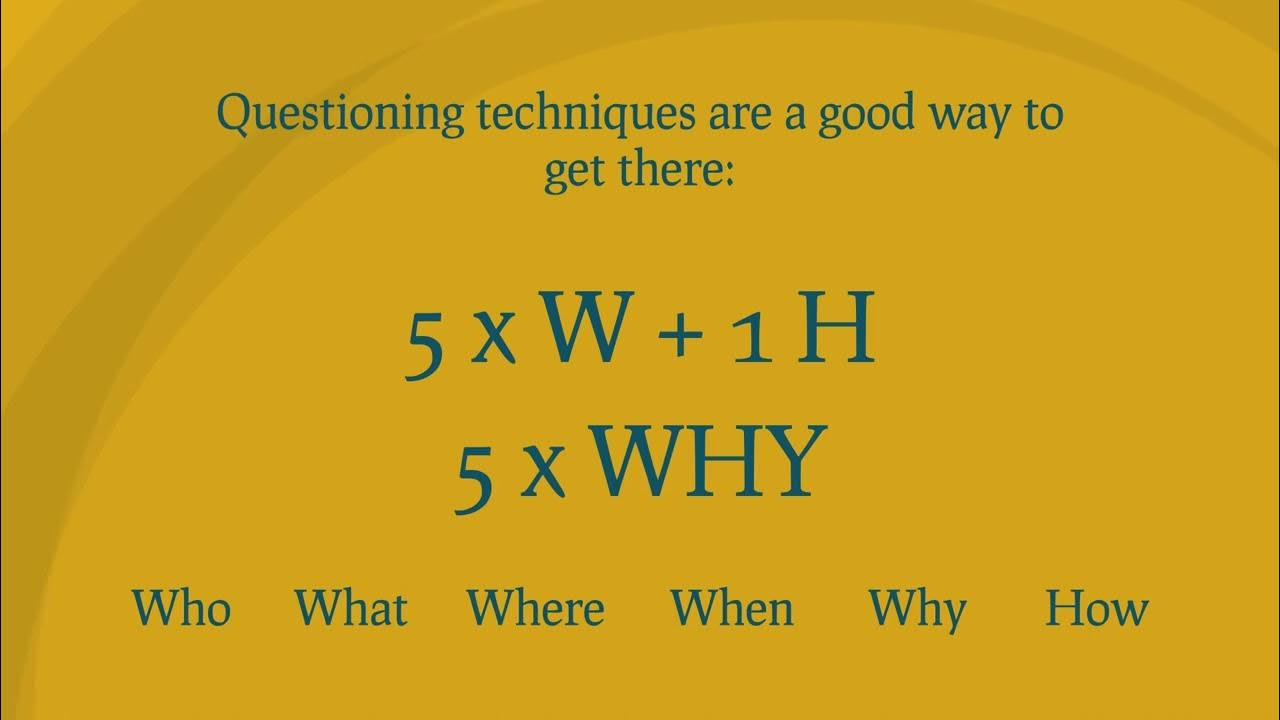Every Problem-Solving Strategy Explained In 10 Minutes
Summary
TLDRThis video explores various effective problem-solving strategies, including trial and error, breaking down tasks, root cause analysis, and brainstorming. Each method is illustrated with relatable examples, highlighting their benefits and applications in personal and professional contexts. The strategies range from lateral thinking and SWOT analysis to mind mapping, heuristic methods, and visualization. By understanding and combining these approaches, viewers can tackle challenges more effectively, turning complex problems into manageable tasks. The video encourages experimentation with these techniques to find the best solutions for individual circumstances.
Takeaways
- 😀 Trial and error is a straightforward problem-solving method involving testing multiple solutions until one works, but it can be time-consuming.
- 😀 Breaking down problems into smaller parts simplifies tasks and reduces stress, making them more manageable.
- 😀 Root cause analysis focuses on identifying the true source of a problem by asking 'why' repeatedly, which helps eliminate issues at their core.
- 😀 Brainstorming encourages the free flow of ideas without judgment, often leading to innovative solutions and breakthroughs.
- 😀 Working backwards starts with the desired outcome and retraces steps, helping to identify necessary actions and potential challenges.
- 😀 Lateral thinking promotes looking at problems from unconventional angles, which can result in creative and unexpected solutions.
- 😀 SWOT analysis evaluates strengths, weaknesses, opportunities, and threats to provide a balanced view for informed decision-making.
- 😀 Mind mapping visually organizes thoughts around a central idea, enhancing clarity and creativity when solving complex problems.
- 😀 The heuristic method offers quick, practical solutions based on experience and rules of thumb, suitable for situations with time constraints.
- 😀 Visualization taps into the imagination to mentally rehearse tasks, which can improve performance by preparing the mind for success.
Q & A
What is the trial and error method, and when is it most effective?
-Trial and error is a problem-solving method where various solutions are tested until one succeeds. It's most effective for hands-on issues or situations with no clear solution, although it can be time-consuming.
How does breaking down a problem aid in problem-solving?
-Breaking down a problem into smaller parts makes it more manageable and reduces stress. By focusing on individual tasks, progress is more visible, which can build momentum and motivation.
What is root cause analysis, and why is it important?
-Root cause analysis involves digging deep to find the true source of a problem, rather than just addressing symptoms. It's important because it helps eliminate issues at their core, preventing them from recurring.
How does brainstorming foster creativity?
-Brainstorming encourages the generation of ideas without fear of judgment, allowing for wild and unconventional thoughts. This can lead to innovative solutions and breakthroughs in problem-solving.
What does the working backwards approach entail?
-The working backwards approach starts with the desired end result and retraces the necessary steps to achieve it. This method is effective in planning and helps identify critical actions to avoid aimlessness.
What is lateral thinking, and how does it differ from traditional problem-solving?
-Lateral thinking involves approaching problems from unconventional angles, encouraging creative solutions that traditional methods may overlook. It often leads to 'aha' moments by bypassing linear thinking.
What is SWOT analysis, and what are its components?
-SWOT analysis is a decision-making framework that examines a problem through four lenses: strengths, weaknesses, opportunities, and threats. It provides a balanced view of a situation, aiding in informed decisions.
How does mind mapping assist in organizing thoughts?
-Mind mapping creates a visual layout of ideas branching from a central theme, helping to organize thoughts and see connections. This enhances clarity and can trigger additional insights for problem-solving.
What is the heuristic method, and when is it typically used?
-The heuristic method focuses on finding quick, practical solutions that may not be perfect but are sufficient. It's commonly used in everyday life, particularly in situations where time is limited.
How can visualization improve problem-solving and performance?
-Visualization involves mentally rehearsing the steps and outcomes of a task, preparing the mind for success. Studies show that this technique can enhance performance by priming the brain for effective action.
Outlines

Esta sección está disponible solo para usuarios con suscripción. Por favor, mejora tu plan para acceder a esta parte.
Mejorar ahoraMindmap

Esta sección está disponible solo para usuarios con suscripción. Por favor, mejora tu plan para acceder a esta parte.
Mejorar ahoraKeywords

Esta sección está disponible solo para usuarios con suscripción. Por favor, mejora tu plan para acceder a esta parte.
Mejorar ahoraHighlights

Esta sección está disponible solo para usuarios con suscripción. Por favor, mejora tu plan para acceder a esta parte.
Mejorar ahoraTranscripts

Esta sección está disponible solo para usuarios con suscripción. Por favor, mejora tu plan para acceder a esta parte.
Mejorar ahora5.0 / 5 (0 votes)






